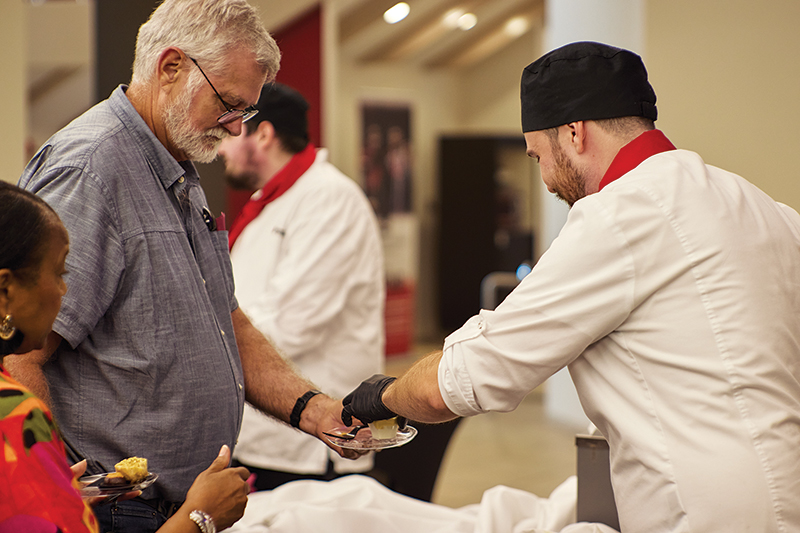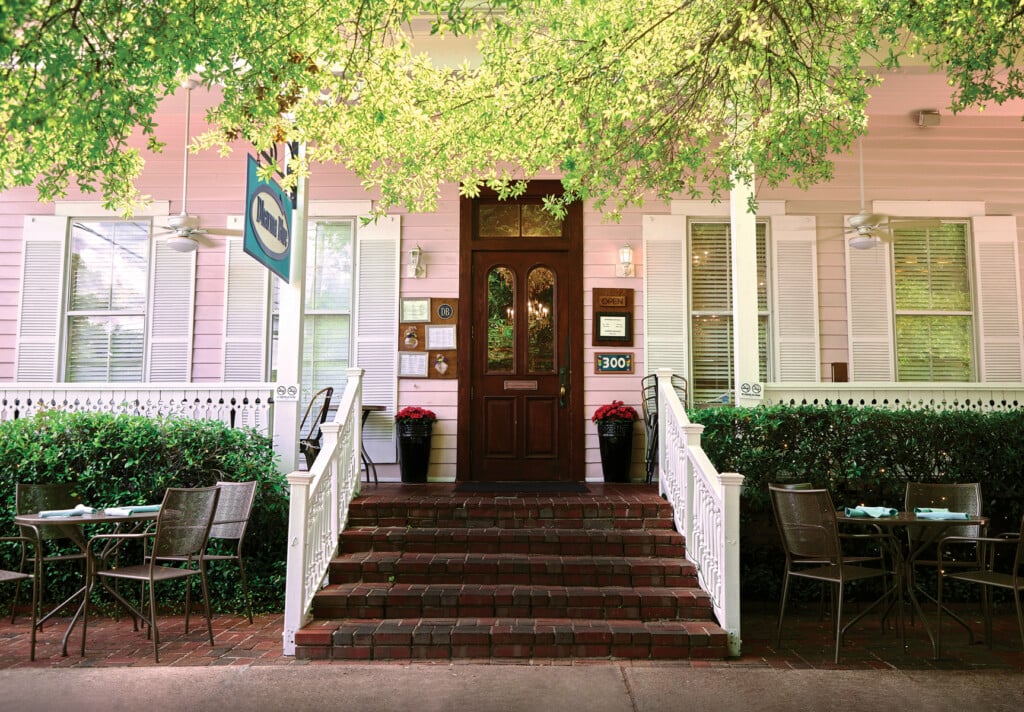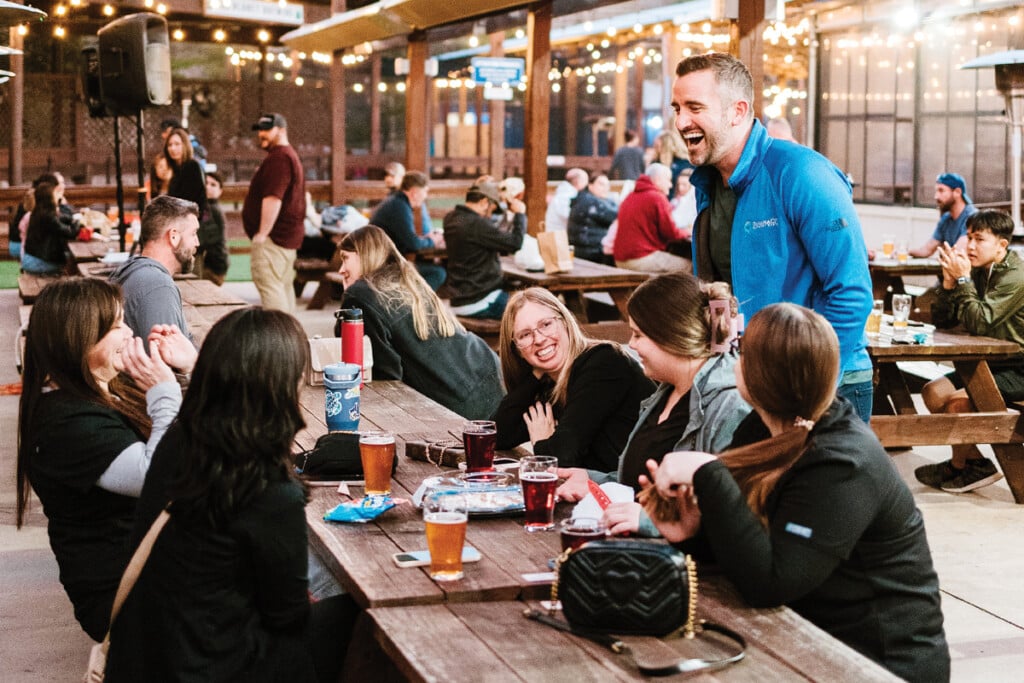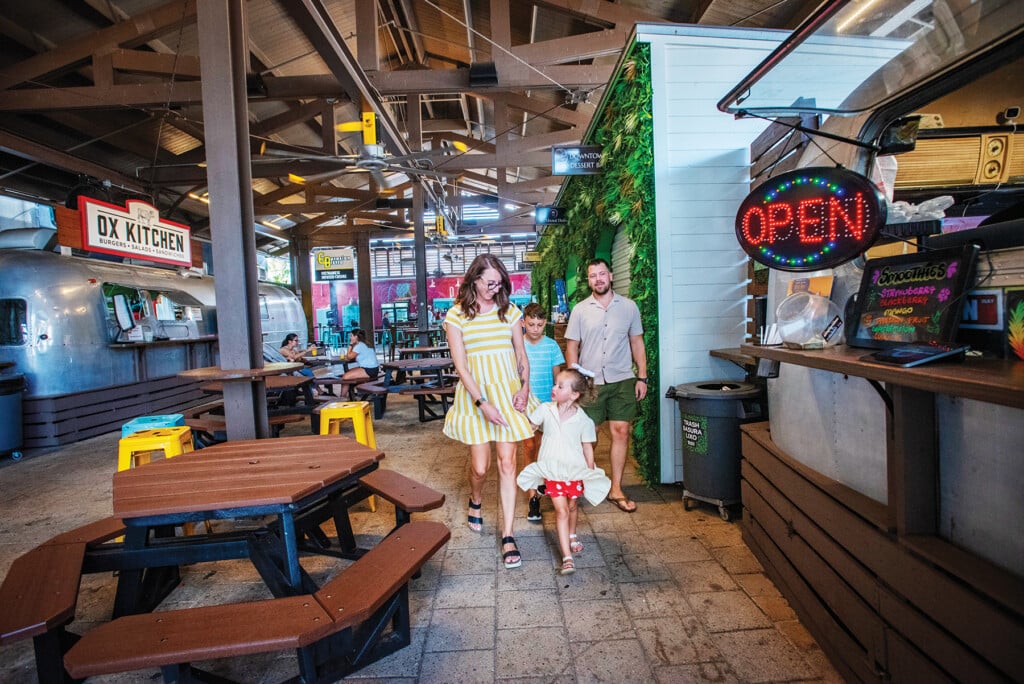Edible Education
A hands-on approach to culinary instruction

Chef Layne Eggers, director and assistant professor of the Culinary Management degree program at Northwest Florida State College (NWFSC), stood in the industrial prep kitchen and watched as his students sampled their latest delectable salad creation of watermelon, cucumber and feta. At the same time, Chef Tim Yeabower, the culinary management and lab instructor, asked if anyone needed an extra drizzle of syrupy balsamic glaze.
For Eggers and Yeabower, teaching and mentoring students at NWFSC’s Culinary Management Program is not just a job. It’s more of a calling.
“I’ve had a great career,” said Eggers, who previously owned several fine dining restaurants and directed culinary innovation in many aspects of the airline industry. “I always seem to come back to teaching.”
According to Julie Cotton, director of NWFSC’s Culinary Management and Hospitality and Tourism Management programs, the two-year associate degree program originated after several local restaurant and tourism leaders approached Dr. Devin Stephenson, president of NWFSC, noting a tremendous need for professionally trained people in the area. The program, now in its fifth year, currently has 30 students and has seen a dramatic rise in enrollment. There is also a 20-credit hour pathway to a Culinary Arts Management Operations certificate for students not interested in a degree program.

↑ Left to right: Chef Layne Eggers, Julie Cotton and Chef Tim Yeabower, lead the Culinary Management and Hospitality and Tourism Management departments at NWFSC. The programs were established in an effort to provide area businesses with a source of employees. Photo by Luke Trexler
The curriculum is designed to teach students the basics of cooking and food preparation in a lecture setting, and then apply those skills in the kitchen. There are courses on baking and pastry preparation, nutrition, alternative diets, recipe development and wine presentation, among others. There is also catering, food and beverage management, cost controls and purchasing coursework.
“We want students to thrive after graduation, so we partner with industry professionals for internships,” Cotton said. “The internships require students to complete 225 hours working with a mentor and supervisor in the field.”
“Any culinary program must stay ahead of the current trends,” Eggers explained. “We have an advisory board of industry professionals that meet with us throughout the year. Hands-on learning is the best way to teach the culinary arts,” he added.
It all comes together at the Seagrass student learning lab, a pop-up restaurant born from Chef Eggers’ belief that the program’s curriculum should mirror the real world. Culinary students spend six Thursdays in the fall and six in the spring meticulously planning and preparing the food, while students enrolled in NWFSC hospitality classes serve as greeters and wait staff.

Showcase attendees enjoyed patisserie-style samplings of chocolate truffles, crème brûlées, petit fours and decadent cakes. Photo by Luke Trexler
“These meals enable students to get immediate feedback from faculty and guests,” said Yeabower, who was previously the executive chef at the Emerald Grande in Destin. “This really helps improve and sharpen their skills.”
“We push the students to talk to the guests who come to the Seagrass,” Eggers added. “They get nervous, but we tell them they must speak to people, not hide behind an oven. That is why we call it culinary management.”
The on-campus restaurant utilizes the open space of The Raider Café, located on the lower level of the 400 building. During the fall semester, the area transforms into a French-inspired, fine-dining lunch venue with linen tablecloths, china and glassware. This year, six three-course lunches included entrees such as Croque-Madame, Trout a la Meuniere, Coq au Vin a la Seagrass and Scallops Provençal.

New York cheesecake offered to the Baking and Pastry Tasting Showcase attendees. Photo by Luke Trexler
During the spring semester, the Seagrass puts on a series of six five-course dinners highlighting international and regional cuisine with themed menus — French, Cajun, Brazilian, Italian, Spanish and “Floribbean.” Menus have included such entrees as Teres Major Prepared Sous-vide (French), Creole Oven Roasted Duck Breast (Cajun), Teres Major Shoulder Steak with Chimichurri sauce (Brazilian), Lobster Ravioli (Italian) and Cuban Fiesta Steak (Floribbean).
The fresh greens and vegetables used in the Seagrass are all sourced from NWFSC’s hydroponic greenhouse, operated by faculty and students.
“It’s hard to wrap my head around everything I have learned in this program,” said second-year student and Air Force veteran Mikki Santiago, sporting a huge smile. “I have been thinking about what I want to do after graduation — possibly a food truck. All of it is just so exciting.”
Veggies

Photo courtesy of Northwest Florida State College
If you want to see gorgeous vegetable plants, step inside the Kay Litke Culinary Arts Greenhouse on the Northwest Florida State College (NWFSC) campus.
There, you’ll find six varieties of lettuce and tomatoes, four varieties of peppers and cucumbers, bok choy and herbs, all grown hydroponically. Chef Layne Eggers, Director of the Culinary Management program at NWFSC, is the resident green thumb who designed the permanent 1,800-square-foot space three years ago.
He wanted his culinary students to learn how to sustainably grow and harvest produce and use the resulting bounty for creative, farm-to-table cooking. Hydroponic systems allow plants to take root and grow in shallow channels of nutrient-rich water.
A computerized system in the greenhouse controls the amount of water, oxygen and nutrients that flow over the roots. The solution is then recirculated to be reused. Plant productivity is impressive.
The current crop of tomato plants is nine months old, can grow up to 50 feet tall and is still flowering. The cucumbers have grown more than eight inches a week. In this environment, there are no bugs and no pesticides, just only good old-fashioned flavor.
Good Eats
The Seagrass restaurant is open to the public and can accommodate 60 guests with a maximum of six per table. Reservations are accepted by email in the spring and fall for lunch and dinner events. For more information on reservations and cost, email seagrass@nwfsc.edu.


